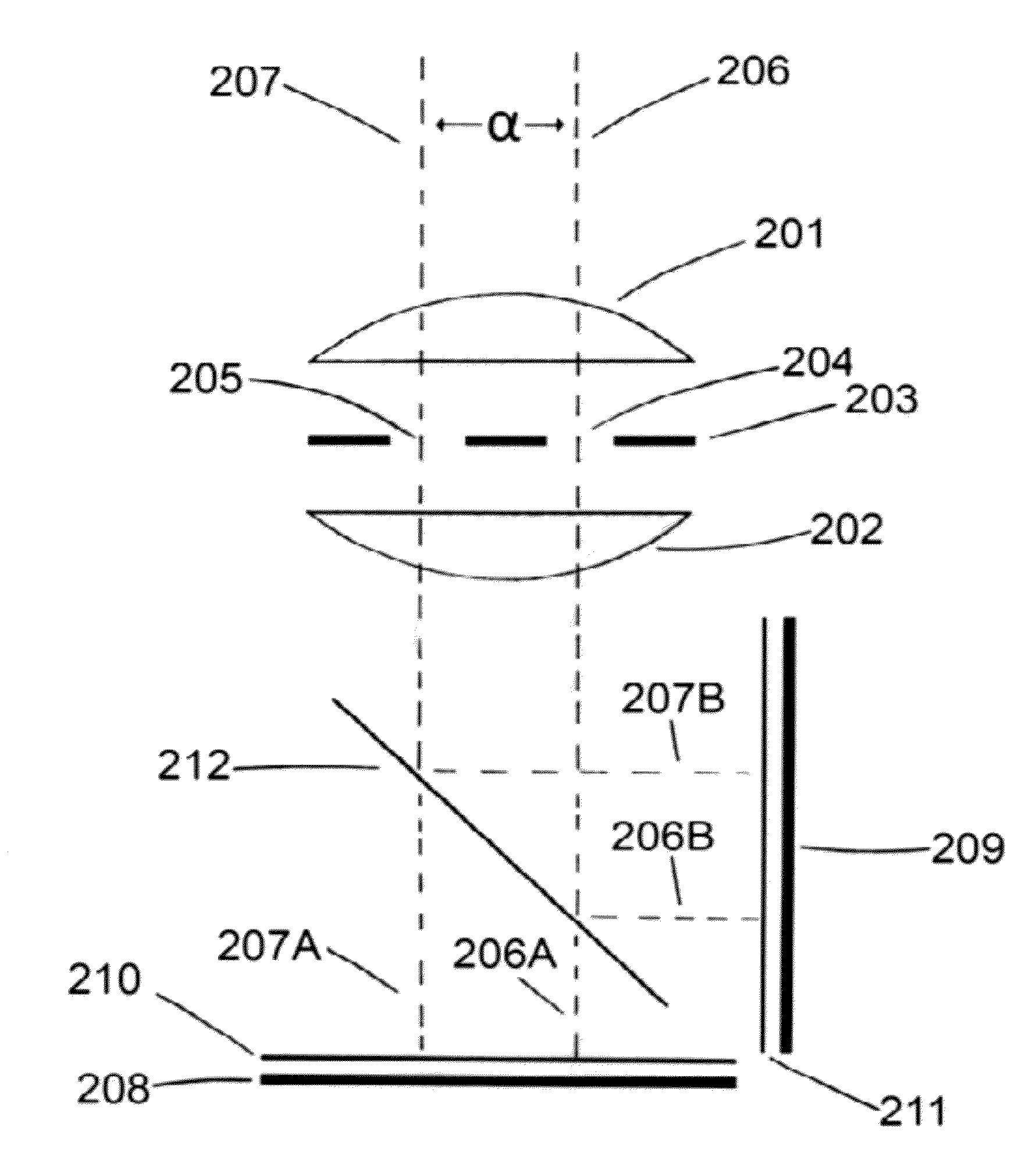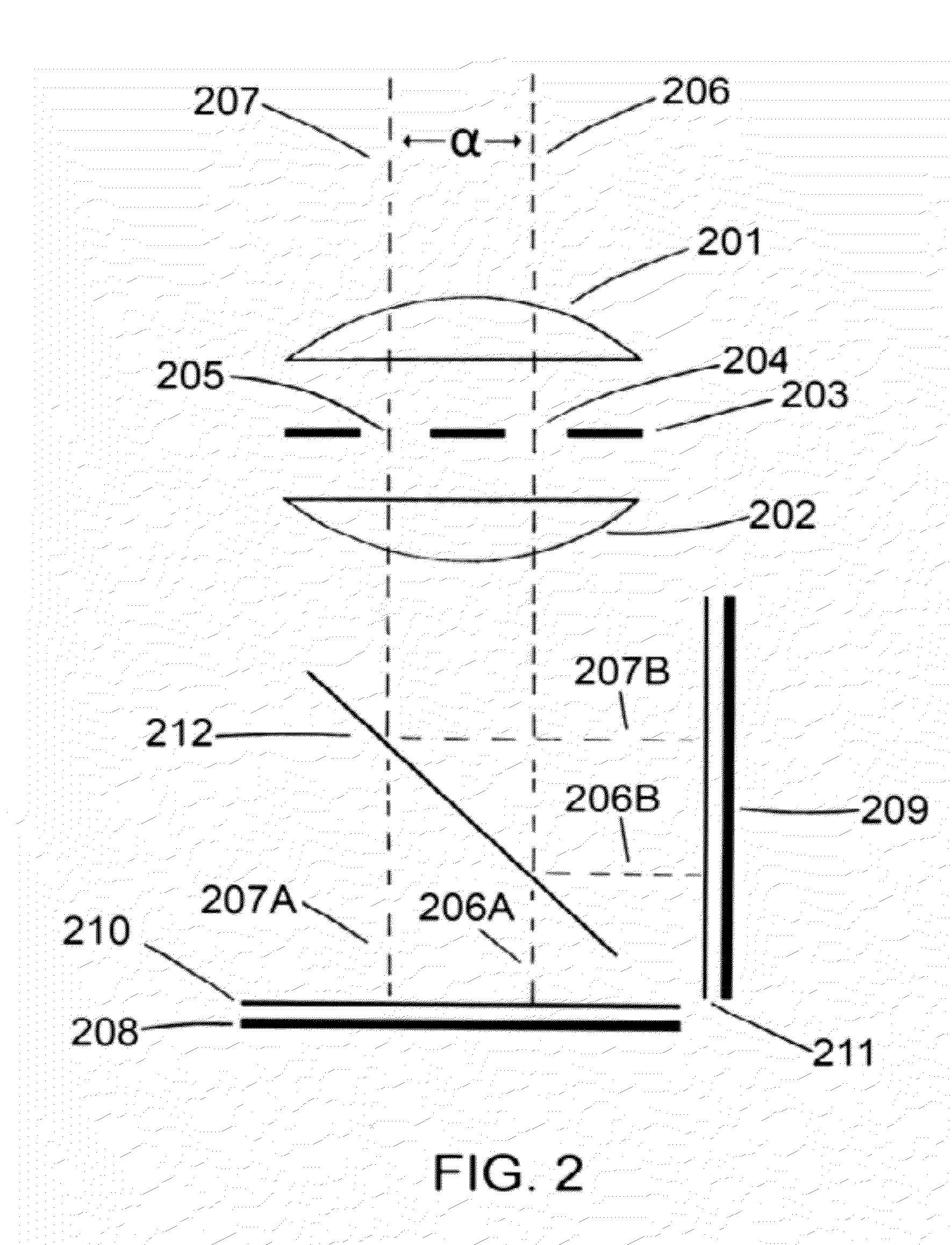Stereoscopic camera with polarizing apertures
a polarizing aperture, stereoscopic technology, applied in the field of stereoscopic cameras and lenses, can solve the problems of limiting the application of stereoscopic photography and cinematography, lack of convenient means, and inability to achieve cinematography meant for theaters and video screens
- Summary
- Abstract
- Description
- Claims
- Application Information
AI Technical Summary
Problems solved by technology
Method used
Image
Examples
Embodiment Construction
[0024]The present design varies the interaxial separation by changing the distance between the lens (or lenses) with polarizing apertures. In one embodiment, a single imaging surface covered by a patterned polarizer is used for spatial multiplexing, and in another embodiment a semi-silvered mirror or wire-grid polarizer is used to divert each perspective image to its own polarizer covered sensor. Mechanical and electro-optical polarizing apertures are also disclosed.
[0025]FIG. 1 depicts one embodiment of the present design. A photographic lens is made of multiple elements 101 and 102 which depict its construction. An actual camera lens is complex and made up of multiple elements. The example shown here has been simplified to two elements to clarity the explanation, but more or different lens elements may be employed. Left lens axis 107 and right lens axis 106 are shown as dotted lines and separated by interaxial distance a 108. As is the case in all similar figures, the lens axes ar...
PUM
 Login to View More
Login to View More Abstract
Description
Claims
Application Information
 Login to View More
Login to View More - R&D
- Intellectual Property
- Life Sciences
- Materials
- Tech Scout
- Unparalleled Data Quality
- Higher Quality Content
- 60% Fewer Hallucinations
Browse by: Latest US Patents, China's latest patents, Technical Efficacy Thesaurus, Application Domain, Technology Topic, Popular Technical Reports.
© 2025 PatSnap. All rights reserved.Legal|Privacy policy|Modern Slavery Act Transparency Statement|Sitemap|About US| Contact US: help@patsnap.com



